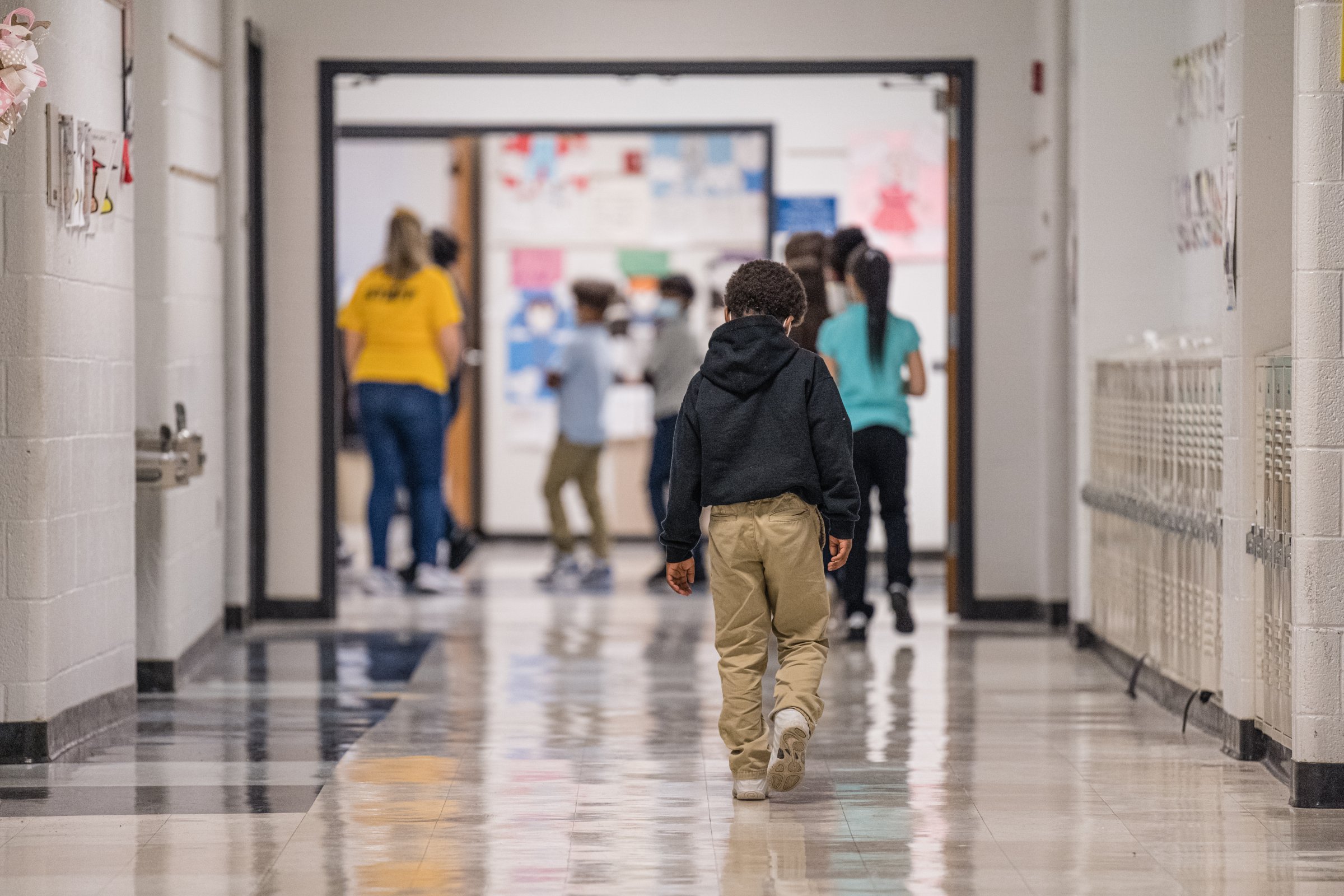
American students saw some of the biggest declines in academic achievement recorded in the last 50 years, according to a nationwide assessment that paints a stark picture of the pandemic’s effect on education.
The results from the National Assessment of Educational Progress (NAEP), which is run by the U.S. Education Department, show that average scores for 9-year-old students fell five points in reading and seven points in math this year, compared to 2020. That marks the first-ever score decline in math and the largest decline in reading since 1990
Scores had been on the rise overall since the NAEP assessments were first administered in the 1970s. But the new results, released Thursday, reflect a drop in average test scores to a level not seen in about two decades.
“This is a moment to look at these scores and use them to fuel something better,” says Allison Socol, who leads K-12 research at the Education Trust, a nonprofit that advocates for educational equity.
Educators and experts say the NAEP results must be a call to action to fund quality tutoring programs, a proven way to improve academic performance, and invest in hiring and retaining experienced teachers to help make up for education loss—especially for disadvantaged students.
Widening gaps
The NAEP results show that achievement gaps have worsened in the last few years, as was long predicted when COVID-19 shut down school buildings and forced students to learn at home under unequal conditions. Declines were worse for students who were already struggling; scores for students in the 10th and 25th percentiles declined more sharply than scores for students in the 75th or 90th percentiles.
And Black students’ math scores dropped 13 points, compared to five points for white students, widening the gap between white and Black student scores from 25 points in 2020 to 33 points in 2022—the widest that achievement gap has been since 1978, according to NAEP results.
Education experts want schools and policymakers to focus on those disparities and prioritize the most vulnerable students in their plans for academic recovery. “Fewer 9-year-olds now have the basic reading and math skills they need. This puts their futures—and our nation’s—at great risk and should spur us all to action,” Beverly Perdue, chair of the National Assessment Governing Board and former North Carolina governor, said in a statement.
U.S. Education Secretary Miguel Cardona blamed former President Donald Trump’s “mismanagement of the pandemic” in his reaction to the test scores, while highlighting the $130 billion allocated to states and school districts in the 2021 American Rescue Plan. “Our top priority remains to make sure states, schools, and districts are using these funds on strategies we know work like well-resourced schools, high-dosage tutoring and enriching afterschool programs – and directing the most resources towards students who fell furthest behind,” Cardona said in a statement.
Socol says that money represents an “unprecedented opportunity” to offer targeted support to students who need it most. But schools trying to tackle learning loss are still confronting longstanding funding inequities that could hinder academic recovery. School districts serving wealthier, white students tend to be well resourced, while those serving low-income students and students of color receive far less funding
“These longstanding funding inequities need to be addressed in order to turn around the trends that we’re seeing,” Socol says. “Money really, really matters. But it also matters how that money is spent.”
How to fix it
She would like to see school districts implement high-quality tutoring programs and invest in experienced teachers to help remedy the educational inequities highlighted in the report.
Elaine Allensworth, director of the University of Chicago Consortium on School Research, says increased instructional time, like an extra math class for students who need it, and targeted professional development for teachers could also help reverse learning declines.
But she says it’s most important to focus on improving the quality of classroom instruction, making sure students receive engaging lessons and build supportive relationships with teachers. Many school districts are now facing teacher shortages, likely limiting their ability to offer programs like high-dosage tutoring, which is most effective when limited to groups of three or four students per teacher.
“How do you find enough people to do that tutoring who are actually going to do it well, and then how do you train them and ensure that they’re doing it with high quality?” Allensworth says. “It’s a logistical challenge as well as a financial challenge.”
More Must-Reads from TIME
- Cybersecurity Experts Are Sounding the Alarm on DOGE
- Meet the 2025 Women of the Year
- The Harsh Truth About Disability Inclusion
- Why Do More Young Adults Have Cancer?
- Colman Domingo Leads With Radical Love
- How to Get Better at Doing Things Alone
- Michelle Zauner Stares Down the Darkness
Write to Katie Reilly at Katie.Reilly@time.com